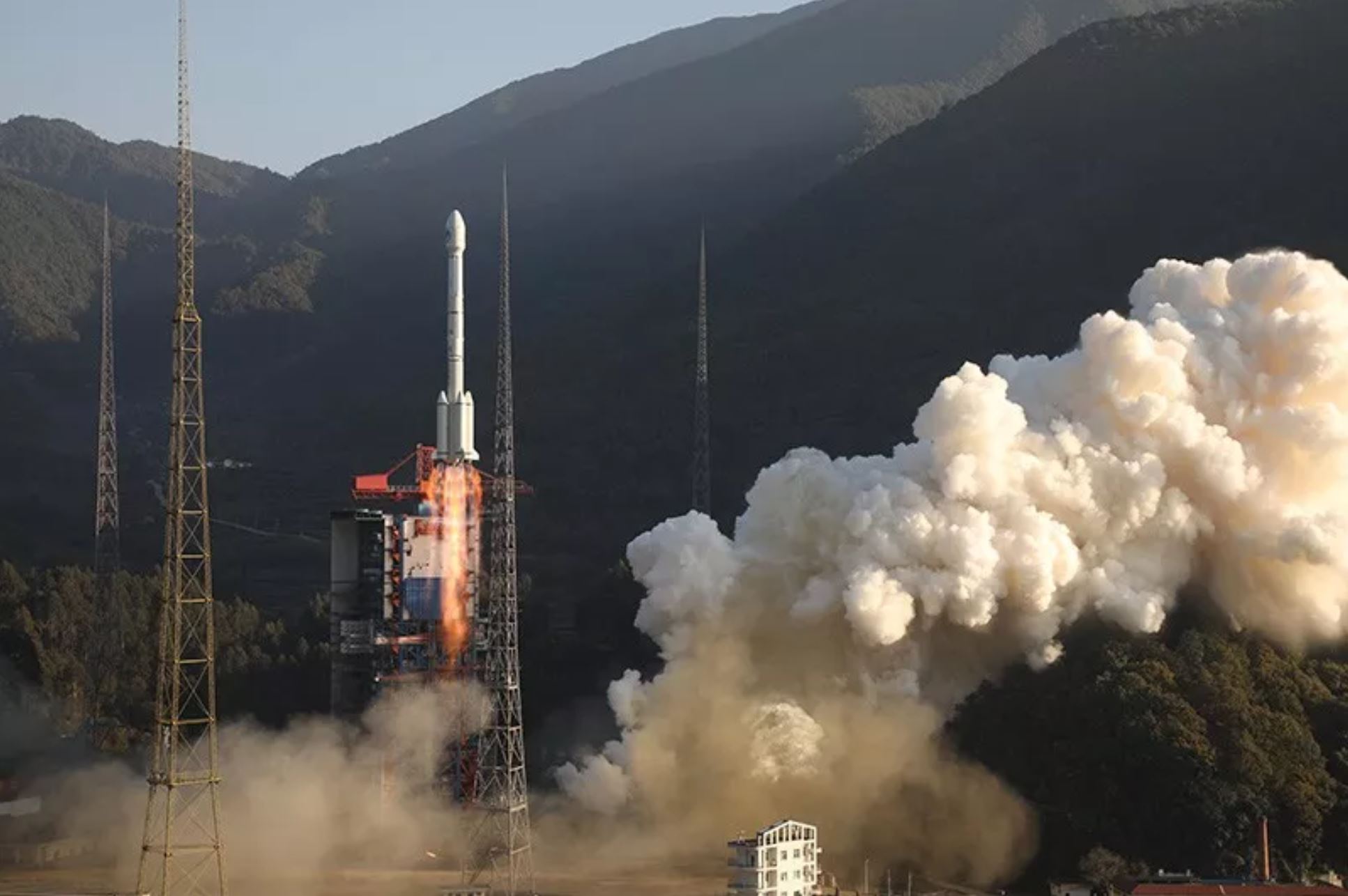Products You May Like
HELSINKI — China will launch Beidou navigation satellites in March and May this year, completing a constellation designed for an array of civil and military applications.
A Long March 3B rocket arrived at the Xichang Satellite Launch Center Feb. 14, according to China News Service. The Beidou satellite for the launch has also arrived at Xichang, the report states.
Both missions will launch single satellites to geosynchronous transfer orbits using enhanced hypergolic Long March 3B rockets.
Xichang spaceport has implemented measures to counter the spread of the Covid-19 coronavirus, but has resumed launches following the Chinese New Year holiday. China announced plans for more than 40 launches this year ahead of the outbreak.
The completed Beidou navigation satellite system consists of 27 satellites in medium Earth orbits, five in geostationary orbits and three in inclined GEO orbits. The orbits of the latter are designed to form two figure eight loops to provide optimized coverage to China and neighboring countries in the Asia-Pacific.
Beidou navigation and positioning system (BDS) is used in sectors including public security, transportation, fishing, power, forestry, disaster reduction, the construction of smart cities, social governance and mass market applications. This system can also be used for emergency search and rescue.
BDS also boosts the capabilities of the People’s Liberation Army in areas including weapons targeting, guidance and other services. Notably Beidou removes previous Chinese military reliance on U.S. GPS, which would be made unavailable in a conflict.
Beidou navigation constellation
The Beidou system has been constructed in three phases. The construction of BDS-1 to provide services to China was completed by 200. BDS-2, providing services to the Asia-Pacific region, was completed by 2012, while BDS-3 will be completed to provide global services in H1 2020.
As with GPS and other navigation systems, Beidou also has requisite ground and user segments as well as the space segment.. The ground segment consists of various ground stations, including master control stations, time synchronization and uplink stations and monitoring stations. The user segment refers to receivers and processors that allow a system or device to make use of the signals transmitted by satellites. BDS features compatibility and interoperability with other navigation satellite systems.
The Beidou is also features in the Belt and Road Initiative (BRI) mega-project. The system has become operational in Pakistan following rollout of ground stations, with the military opting to switch from GPS to Beidou services.
The China Satellite Navigation Office states that Beidou has a positioning accuracy better than 5 meters, the velocity for the Asia-Pacific region.
The China Academy of Space Technology (CAST) and Chinese Academy of Sciences (CAS) are responsible for development and manufacture of Beidou navigation satellite. The satellites use hydrogen maser clocks for precision timing and phased array antennae for navigation signals.
China announced Feb. 15 that the 41st and 49th (geosynchronous), 50th and 51st (medium Earth orbit) Beidou satellites had completed on-orbit testing and officially joined the network.
The Beidou Navigation Satellite System has been constructed primarily using the Long March 3B rocket. Launching from Xichang deep inland, spent stages have often threatened inhabited areas downrange.
Official documents from the Beidou system office state (pdf) that China plans to establish a “ubiquitous, integrated and intelligent, comprehensive national positioning, navigation and timing (PNT) system” based on Beidou by 2035.
